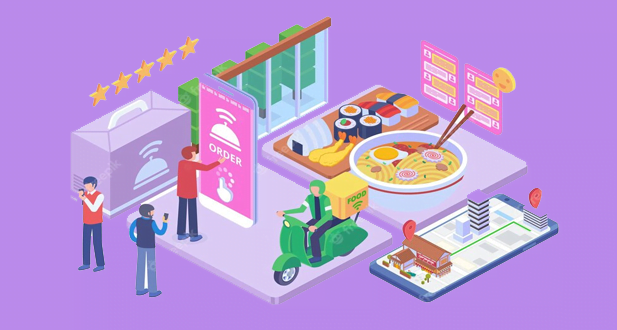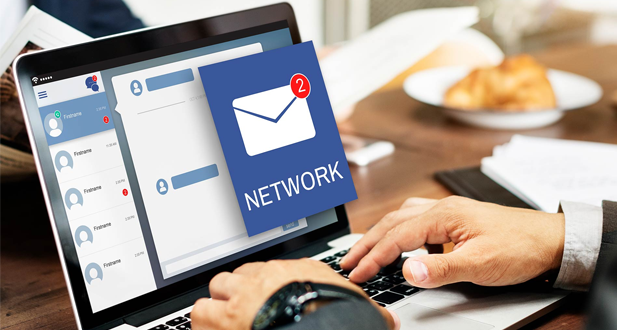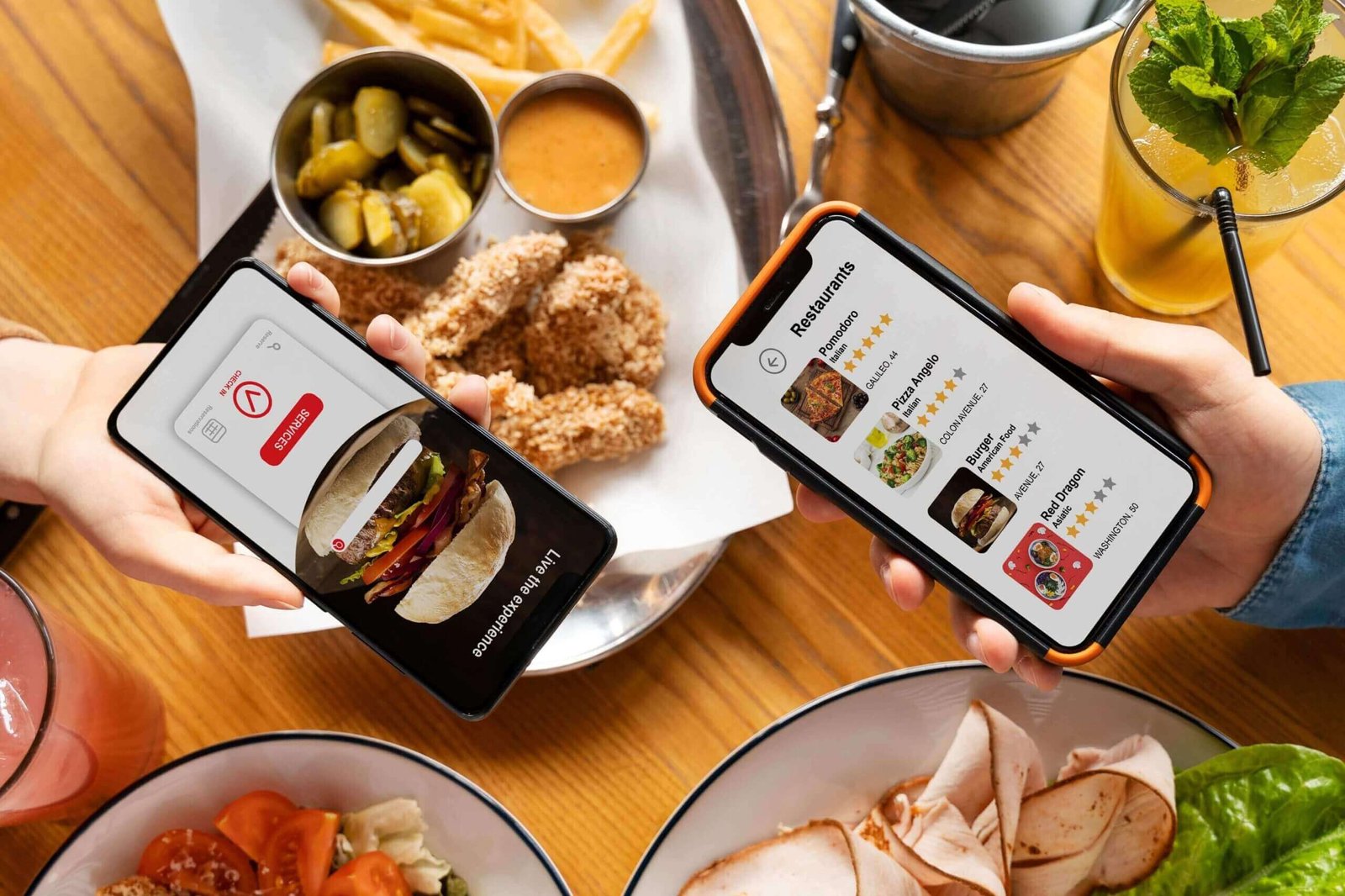Modern technology has fundamentally changed the way that industries are growing and developing. The food delivery business is one such sector that has made several advancements in economic development and experienced significant growth. The online economy has attracted people today, increasing their dependence on it. The primary driver of a breakthrough in online meal delivery is people’s fundamental belief that they can become entire through the internet.
What is a multi-restaurant management system?
The online meal ordering system has recently added new features and functionality. The platform of software created in the present for the food delivery sector has been expanded to allow restaurants to manage orders throughout their numerous branches and outlets spread across multiple places. A wide range of food enterprises have found comfort and convenience in this online arrangement, making it easier to organise and maintain their order management system.
Why Use an Online Ordering System for Multiple Restaurants?
You are making it simple for guests to order meals from your restaurant by selecting a multi-restaurant online food ordering system. A user may collect from the closest restaurant branch based on location. Thus, by using this strategy, you may increase restaurant sales.
1. No Commissions Anymore: Do you understand how GrubHub, Zomato, Swiggy, and Uber Eats operate and make money? They impose a 20–30% fee on any order placed through their site. You may prevent losing this money by developing an online ordering system for several restaurants.
2. Control Every Detail with a Touch of Technology:
Managing stocks, stock, orders, and invoices is no longer necessary when you set up a multi-restaurant online ordering system. The software’s admin panel will allow you to control everything perfectly.
Benefits of utilising software for managing multi restaurants
1. Individuality: For a successful online meal delivery system, restaurants can have their own application software instead of relying on a third party. To establish online portals and mobile applications as a source of accepting orders, this, in turn, serves as a key. Social media users that utilise mobile devices or web browsers can access the application through numerous social media sites, including Instagram, Facebook, and others.
In today’s world, successfully opening several stores or branches frequently necessitates internet advertising. The administration of a multi-restaurant system is facilitated by upgrading the software. It is a fantastic approach to connecting with a vast audience. The consumer may learn more about the restaurant using the application as their communication channel. When a restaurant is self-sufficient, it differentiates out from the competition by having its food delivery system. This enables businesses to stand out from other eateries and makes it simple for clients to recognise the brand.
2. Customers may reach the business easily: In the case of multi-restaurant meal ordering systems, a consumer will select the closest and most convenient location while ordering food through an online app. Even when a restaurant has many places, a client may examine the menu for different cuisines, pricing ranges, specials, etc., at each location. Customers can access the restaurant closer to them, even if these are comparable for all the outlets. Depending on their needs, the customer can use this management software.
Due to several obstacles in food delivery by the eateries, customers may occasionally have discomforts and problems while trying to order meals. Launching a meal ordering platform for many businesses aids in removing all obstacles and making it simple for customers to place orders.
3. Time consumption: Handling client orders is easier for restaurants using an online multi-restaurant management system. With the help of this method, restaurants may reduce the number of additional staff members needed to service their clientele while also speeding up a laborious procedure. Owners of businesses may manage the delivery procedures more efficiently and with less human labour. Everything has been more accessible and less complicated with the new launch.
4. Fewer actions: Multi-restaurant management software’s sophisticated features make operations simpler and need less management. No matter where they are or what time it is, restaurants can quickly access and use the user-friendly functions offered by the online delivery application. This solution includes an admin dashboard panel that controls the program’s technical power. It makes it easier for the delivery sector to manage the online food applications.
5. Options that are unique and flexible: The restaurant menu selections may be customised based on the customers’ needs. The program offers the opportunity to add or delete menu items, update pricing lists, track daily operations like the number of customer orders received and delivered, produce sales reports, etc. New company start-ups aiming to mark footprints in the food delivery market might employ this platform. The expanding entrepreneurs have a wide range of opportunities thanks to multi-restaurant meal delivery services.
Before making an order, here are some key considerations for a multi-restaurant online ordering system.
- White Label and SaaS System Differences: You have a great deal of flexibility with the white label, and you also own the software. You will have access to the code and may decide whether to update or make modifications as you like. You may let your company pick its name. White Label software suppliers provide fixed pricing.
The SaaS system bills monthly or annually, depending on the package you select. You must renew the SaaS system following the plan’s provisions to continue using it. You are not permitted to request feature updates or change the software.
- Built Specifically for Food Delivery: The meal ordering system you are considering using for your company must be designed specifically for food delivery. A more basic delivery app won’t have all the features you want. Coding and reconfiguration may be necessary. This entails higher costs and a more extended implementation period for your organisation.
- Self-Brand Consistency: The Multi Restaurant Online Ordering System must be compatible to utilise your brand name. This is a benefit. Restaurants and your customers will remember you right away. It will support the development of your reputation and brand.
- Compatibility of Online and Offline Payments: Giving your clients online and offline access to straightforward payment options can help them live a little easier and expand your user base. The customer module will incorporate online payments, and customers may start costs directly from the module. Internet banking, debit card, and credit card payments should be among the offline payment options. Customers can pay offline payment options such as cash on delivery and outside of the app (COD). You can assist clients in making prompt payments using the wallet function in a few easy steps.
- Importance of the Driver, Restaurant Rating and Review System: A review and rating function is a need for any app created for a meal ordering system. The delivery administrator will be able to learn what customers think of the drivers’ level of service and customer satisfaction. Reviews may be utilised to eliminate bad drivers and enhance the delivery process.
- SMS and emails that are sent immediately: The system’s ability to convey messages to drivers, restaurants, and consumers is essential for maintaining the participation of all stakeholders in the food delivery system. The system must support SMS and email messages and the standard built-in notification mechanism. This will enable the owner to monitor nearby activity from a single management point.
- Management of Restaurant Orders App: The restaurant order management app is a crucial feature that has to be included in the app. Here, the restaurant will collect orders, display its menu, and record any special requests made by patrons. This function will make it simple to display restaurant opening and closing times and the typical time needed to prepare and deliver the requested meal.
- Friendly menu setup and management: For the restaurant to accept and fulfil orders, this functionality is crucial. It will enable immediate modifications to the restaurant’s opening and closing hours, adding or deleting food, and gathering client feedback. This module will offer a lot of freedom in selecting the menu and clearly explaining each dish.
- Modules for delivery zones: Each employee performing a particular job in the delivery loop requires a different module from the Multi Vendor Food Ordering System. One for the restaurant management with complete control, one for the delivery person, and one for the client should all be present. Each will have unique characteristics and degrees of power.
- Customers’ Advanced Cart and Checkout: Numerous advanced features can be added to the cart and checkout module, such as the ability to split costs at the time of checkout, order for weeks or days in advance, request delivery of food in advance to specific locations, redeem discount coupons, and update order instructions.
How Does the Online Ordering System for Multiple Restaurants Work?
While it functions similarly to a meal delivery service like Uber Eats or Zomato, all the restaurants listed here are your branches.
Customers can open your restaurant’s app, select their preferred cuisine, and make an order without physically visiting.
The admin will receive a notification when the order is placed and may begin processing it. The delivery boy will pick up the order after it is prepared and bring it to the user.
Where is the Multi-Restaurant Online Ordering System Available?
Any company involving food goods can use the multi-restaurant online ordering system. It could consist of perishable foods like frozen yogurt or ready-to-eat foods like pizza and doughnuts.
Here’s the information you need to set up your restaurant’s online ordering system:
- Best Section: Use an online meal ordering app rather than creating it from scratch. You’ll save a ton of time and even money this way. Such systems need less maintenance and are simple to incorporate. To use the program, you only need to pay a monthly or yearly cost.
- Offers & Coupons Available to Customers: The system for online meal delivery from many restaurants includes elements like offers and coupons. Therefore, advertise your restaurant chain and increase online sales by giving discounts and coupons to your new and current consumers.
Selecting the best multiple restaurant food delivery system is crucial for ensuring seamless operations, customer satisfaction, and maximizing profitability. With numerous options available in the market, it’s essential to consider several key factors that align with your business needs and objectives. Here are the detailed points to consider:
1. User-Friendly Interface
- Ease of Use: The system should have an intuitive and easy-to-navigate interface for both customers and restaurant staff.
- Customization Options: The ability to customize the interface to reflect your brand’s aesthetics and functionality.
- Mobile-Friendly Design: Ensure the platform is optimized for mobile devices, as many customers order via smartphones.
2. Integration Capabilities
- POS Integration: The system should seamlessly integrate with your existing point-of-sale (POS) systems to streamline order processing.
- Third-Party Integrations: Look for systems that can integrate with other essential tools such as accounting software, CRM, and marketing platforms.
- API Availability: Availability of APIs for custom integrations and additional functionality as your business grows.
3. Order Management
- Real-Time Tracking: Features that allow customers and restaurants to track orders in real-time.
- Order Accuracy: Tools to minimize errors in order placement and ensure correct deliveries.
- Bulk Order Handling: Capability to efficiently manage large volumes of orders, especially during peak times.
4. Menu Management
- Dynamic Menu Updates: Ability to update menus easily to reflect new items, prices, or availability.
- Customization Options: Allow customers to customize their orders (e.g., add/remove ingredients, special instructions).
- Multi-Language Support: If serving a diverse customer base, ensure the menu can be displayed in multiple languages.
5. Payment Processing
- Multiple Payment Options: Support for various payment methods including credit/debit cards, digital wallets, and cash on delivery.
- Secure Transactions: Ensure the system complies with the latest security standards (e.g., PCI DSS) to protect customer payment information.
- Easy Refunds and Adjustments: Simplify the process for handling refunds, discounts, and promotional codes.
6. Delivery Management
- Efficient Routing: Optimize delivery routes to ensure timely deliveries and reduce operational costs.
- Driver Management: Tools to manage delivery personnel, including tracking, communication, and performance monitoring.
- Partner with Third-Party Services: Option to integrate with third-party delivery services for broader coverage and efficiency.
7. Customer Experience
- Loyalty Programs: Implement features that encourage repeat business such as loyalty points, rewards, and referral programs.
- Feedback and Reviews: Enable customers to leave reviews and feedback to help improve service quality.
- Customer Support: Provide robust customer support through chat, email, or phone to address issues promptly.
8. Marketing and Promotion Tools
- Promotional Campaigns: Ability to create and manage discounts, deals, and promotional offers.
- Email and SMS Marketing: Integrated tools for sending targeted marketing messages to your customer base.
- Social Media Integration: Features that allow easy sharing of menus and promotions on social media platforms.
9. Analytics and Reporting
- Sales Reports: Detailed sales reports to monitor performance and make informed business decisions.
- Customer Insights: Analytics on customer behavior, preferences, and order history.
- Operational Efficiency: Reports on delivery times, order accuracy, and other key performance indicators.
10. Scalability
- Handling Growth: The system should be scalable to handle an increasing number of orders and restaurants as your business grows.
- Multi-Location Support: Manage multiple restaurant locations from a single platform.
- Cloud-Based Solution: Consider a cloud-based system for better scalability, reliability, and reduced maintenance costs.
11. Cost and ROI
- Transparent Pricing: Understand the pricing model (e.g., subscription, commission-based) and ensure it fits your budget.
- ROI Considerations: Evaluate the potential return on investment through increased sales, improved efficiency, and enhanced customer satisfaction.
- Free Trials and Demos: Take advantage of free trials and demos to assess the system’s functionality before committing.
12. Compliance and Security
- Regulatory Compliance: Ensure the system complies with local regulations and industry standards.
- Data Protection: Robust data protection measures to safeguard customer information.
- Regular Updates: A system that receives regular updates to address security vulnerabilities and improve features.
Choosing the right multiple restaurant food delivery system is a significant decision that can impact your business’s success. By carefully evaluating these factors, you can select a system that meets your needs, enhances operational efficiency, and provides an exceptional customer experience.
Conclusion:
The twenty-first century is known as the era of technology. Consequently, you need to make it possible for people to locate your restaurant chains online to retain business to your rivals. Developing a meal ordering system compatible with several restaurants is the best approach, as this will allow you to communicate with your ideal customers using desktop software and mobile applications.
Frequently Asked Questions:
The multi-vendor meal delivery system allows a customer the freedom to select food products from many restaurants of their choosing.
This implies that several eateries may be established and run under a single management structure, with the significant advantage of sharing the menu and promotions.
A multivendor marketplace: what is it? An e-commerce platform known as a multivendor marketplace enables numerous sellers to sell their goods from a single storefront. A multivendor store offers buyers a vast selection and allows sellers access to a larger pool of clients prepared to make purchases.
To sell more units, franchisors will have to interact with fewer franchisees. The multi-unit franchisee partners they deal with frequently operate profitable businesses under several brands, are knowledgeable about franchising and have relevant expertise.




